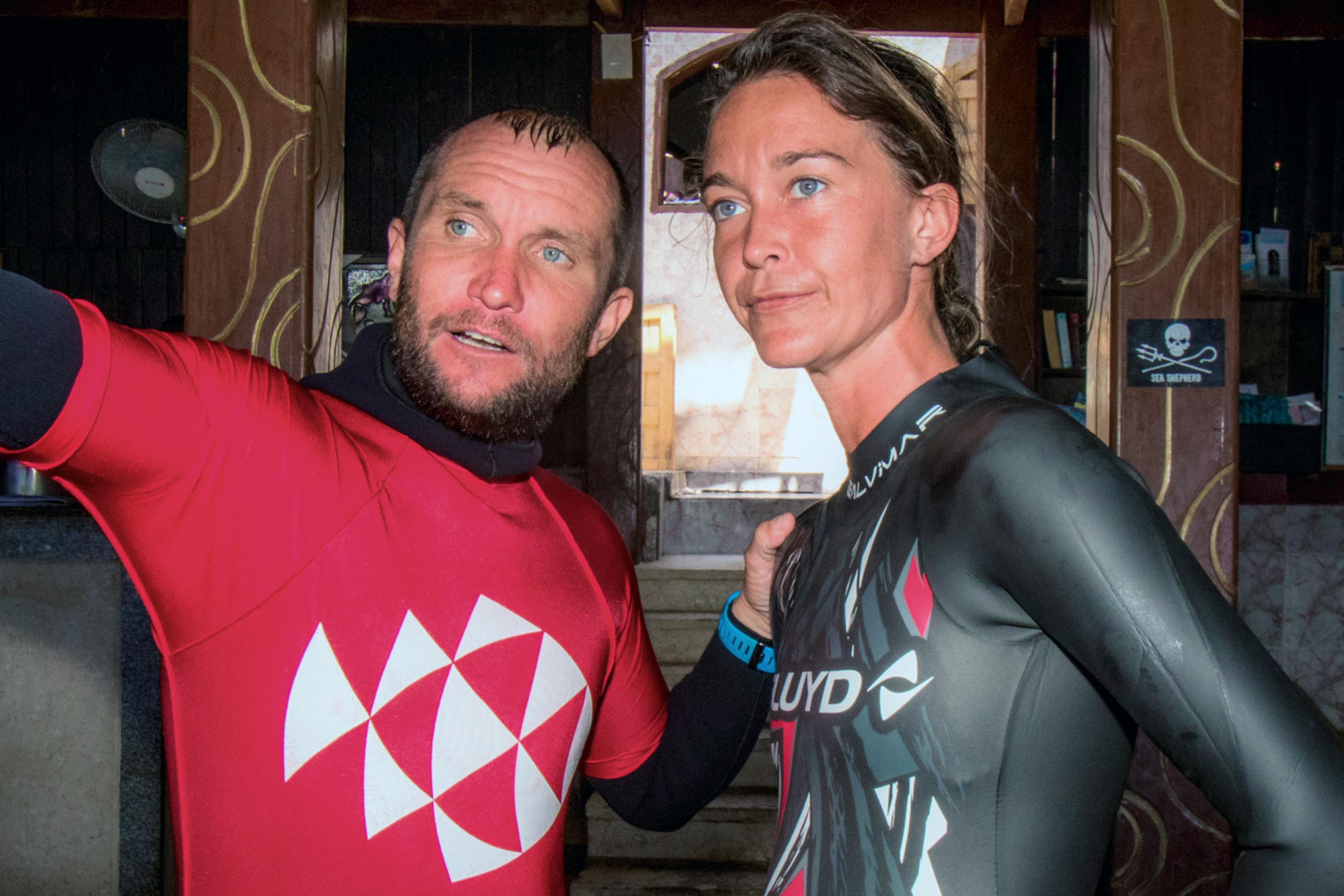
Audience left gasping for air as free divers find love and death in Netflix’s ‘Deepest Breath’
- Documentary follows the fortunes of free-diving couple Alessia Zecchini and Stephen Keenan as they stretch human endurance to its limits
- Director Laura McGann follows couple to see what drives them to risk everything below the waves
Early in “The Deepest Breath,” an underwater drone follows free diver Alessia Zecchini as she plunges 100 metres into the ocean’s dark depths, and back up, all on a single breath.
The heart-pounding, claustrophobic 3½-minute sequence is as difficult to watch as it is mesmerising.
As she ascends to the shallows, Zecchini’s body begins to twitch. Rescue divers seize her and drag her up to the surface, her unconscious eyes rolling grotesquely backward as she is resuscitated.
It may seem shocking, but “blacking out” from lack of oxygen is a common occurrence in free diving, an extreme sport in which athletes compete to go as deep as they can without any breathing apparatus.
“You can watch all the videos in the world. It doesn’t really prepare you for seeing a human being just pass out like that, it’s scary to see,” said director Laura McGann, director of the Netflix documentary.
Through archive footage, interviews and a handful of re-enactments, McGann’s film explores what drives these men and women to repeatedly risk their lives and push the limits of human endurance in pursuit of new competitive records.
“Seeing a human being behave more like a seal or a dolphin in the water, with no tanks, was kind of like learning that there was a group of people in part of the world that knew how to fly,” she said.
Specifically, the film focuses on the relationship between record-breaking diver Zecchini and Stephen Keenan, a nomadic young Irishman who becomes one of the sport’s top safety experts.
Free divers, if not actively courting death, do not appear to fear it. Indeed, Zecchini airily claims in the movie’s opening scene that she does not even think about death.
Yet it quickly becomes apparent that some sort of tragedy has occurred.
Neither Zecchini nor Keenan appear among the film’s present-day interviews, leaving the question of their fates hanging for much of the movie – at least, for those able to resist a quick Google search.

That structure was criticised as being somewhat manipulative in early reviews at January’s Sundance Film Festival, where the movie premiered, having already been acquired by Netflix days earlier.
But McGann decided “really early” that her film would remain “in the moment” with its characters throughout their journeys.
“Death was always going to be towards the end of the film,” she said.
“The Deepest Breath” is the latest documentary to explore dangerous obsessions through the lens of a love story.
Last year’s Oscar-nominated “Fire of Love” followed a husband-and-wife scientist couple as they risked their lives to explore the craters of erupting volcanoes.
In 2019, “Free Solo” profiled death-defying climber Alex Honnold, as he juggled his obsession with climbing a notorious rock face without ropes, and his relationship with his understandably terrified girlfriend.
For McGann, the relationship between Zecchini and Keenan was “a yin and a yang,” like “they were each other’s missing piece,” even before they connected as celebrities in the small free diving community.
It emphasises that free diving is as much a mental sport as it is a physical one, requiring very specific personality types that not only stay calm, but actively enjoy being 100 meters under water, beyond rescue.
“What the free diver is feeling is definitely close to the complete opposite to what we the audience are feeling,” McGann said.
While viewers might struggle for breath just watching, divers speak of a “serene, quiet, peaceful silence,” as they quieten their minds and reduce their heart rates to “that of a Tibetan monk”.
“You’re almost in a meditative state,” McGann said. “But you need to keep a little bit of your subconscious aware of what you’re doing – so that you remember that you have to come back up.”

.png?itok=arIb17P0)